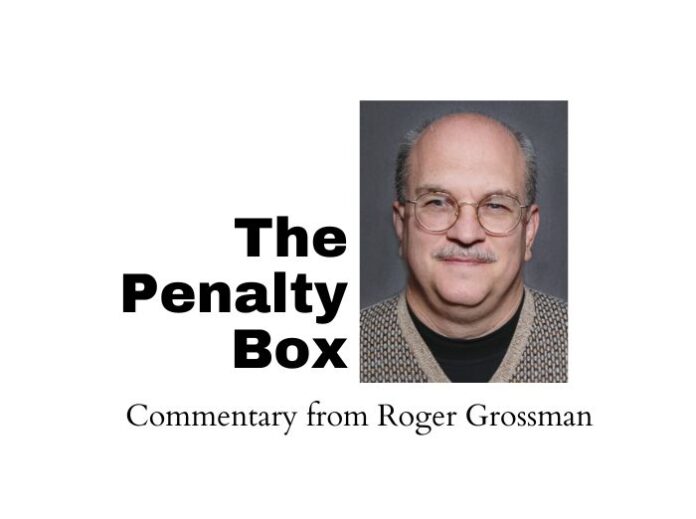By Roger Grossman
News Now Warsaw
WARSAW — Baseball is trying something new.
That, in itself, is enough of an opening line to make you sit up and take notice.
Baseball doesn’t make these kinds of changes very often, and they have never made so many significant changes all at once.
At the grocery store, at my go-to gas station, in the lobby after church I get “what do you think of what baseball is doing?”
My answer is consistent and sincere: “I have no idea. We’ll have to wait and see.”
Let’s review what baseball did.
The Pitch Clock
Baseball always has been a sport with more downtime than action, largely because it’s acolum game with an intense thought process between every pitch for both batter and pitcher.
But it’s become silly in how long major league games take to play.
Part of that is the length of time between innings because every game I televised. Part of it is the length of time that it takes for the pitcher and catcher to get straight what pitch they want to throw. And then you have the other things like throws to first to hold runners close, fake throws to second base and batters stepping out of the box waiting for the pitcher and catcher to get their act together.
To increase the action, there will be a 30-second timer between batters. Between pitches, there will be a 15-second timer with the bases empty and a 20-second timer with runners on base. They used this in the minor leagues last summer, and it reduced the average time of a game in MiLB by about 26 minutes.
If a batter isn’t ready with seven seconds left on the clock, he’s charged a strike, and if the pitcher doesn’t start his motion before the clock hits :00, he is charged a ball.
And yes, if you have two strikes and you are late stepping into the box, you’ll be called out.
Throw-over Limits Pitchers will be limited to two ‘disengagements’—pickoff attempts or step-offs—per plate appearance. A third pickoff attempt results in runners advancing one base like they would after a balk if that runner isn’t picked off.
No More Shifts
Teams in the field must have a minimum of four players on the infield, with at least two infielders completely on either side of second base. Those four infielders must be in the dirt part of the infield, and they cannot switch sides—which means, for example, when Nico Hoerner of the Cubs is playing second base he can’t ever swap with Patrick Wisdom and play third base for one batter. There’s no penalty for that … you just can’t do it.
However, a team can position an outfielder in the infield or in another part of the outfield —for example: a left fielder could move into shallow right-center field if the team wants.
Bigger Bases
The bases, which traditionally have been 15 inches square, will now be 18 inches. Add that to the throw-over limits and you make stealing bases more appealing to offenses.
Remember, it’s not as much about making games shorter as it is about making them more exciting.
You undoubtedly have questions:
What happens with the pitch clock after a foul ball when the fielders have a long run to make?
Common sense is supposed to take over. Umpires are supposed to be reasonable in letting fielders get near their position before starting a new clock.
Can a pitcher ask for a new ball?
Yes, but they have to ask with at least eight seconds remaining on the clock.
What is the catcher’s responsibility in getting ready?
He must be in his box and ready with at least nine seconds remaining on the clock.
My current reaction to all of this is that I would rather see the bases left the same size and use a double base at first base as we had in slow-pitch softball at the CCAC to improve safety. I think an extra five seconds on the pitch clocks would be fine. I love the thought of fewer throw-overs and would love even more to see the fake to second be called a balk.
But in the end, none of us knows how this is going to work or if it will work at all. Yes, they made a difference in the minors, but the minors are not the majors.
We need to show some patience on this. We need to let this soup cook for a while and see how it tastes this summer.
Most of all, we have to understand that games are going to end without a pitch being thrown or a batter in the box. We are going to see it, I think, every week or ten days, and it just might end up ruining someone’s playoff chances.
Heck, it might just be how the last game of the World Series ends. Can you imagine a “walk-off … delay of game?”
That’s the pain of progress … I think.





